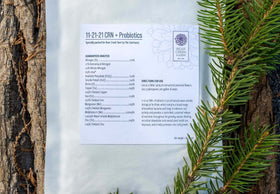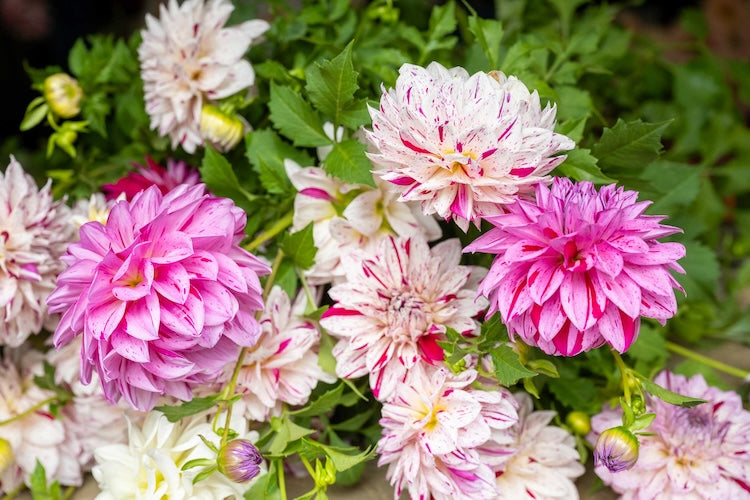Understanding how to care for dahlias in both consistently hot climates and during temporary heatwaves is essential for maintaining their health and beauty. Let's delve into strategies for each scenario.
Living in a High Heat Area
For gardeners in regions where high temperatures are the norm, long-term planning and strategic care are crucial.
-
Site Selection and Shade Provision:
- Strategic Planting: In consistently hot climates, planting sites that offer natural afternoon shade are a good choice. Positioning dahlias near taller plants or structures can provide relief from the intense midday sun.
- Shade Cloth: Shade cloth to protect dahlias during peak heat is another alternative as it reduces sun stress and preventing leaf scorch.
-
Watering and Soil Management:
- Deep Watering: Establish a deep watering routine to keep the roots hydrated. Watering early in the morning minimizes evaporation and ensures moisture reaches the roots.
- Mulching: Apply a thick layer of organic mulch around the base of your dahlias to retain moisture and keep the soil cool. Mulch also helps suppress weeds that compete for water.
-
Soil Amendments:
- Improving Soil Structure and Fertility: Enhance your soil with organic matter to improve its structure, nutrient content, and microbial activity. Well-structured soil with good organic content supports healthier root systems and better water infiltration, preventing root rot, a common issue in hot, wet conditions.
-
Nutrient Management:
- Balanced Feeding: Provide regular, balanced fertilization to support vigorous growth and flowering. Opt for low or no-nitrogen organic fertilizers to avoid promoting excessive foliage at the expense of blooms.
-
Heat-Tolerant Varietals:
- Variety Selection: For dahlia farmers in warmer states, selecting heat-tolerant varietals can make a significant difference. These varieties are bred to withstand higher temperatures and continue blooming despite the heat. For more information on heat-tolerant dahlia varieties, you can refer to the Dahlia Society of Georgia.
Managing Temporary Heatwaves
When faced with an unexpected heatwave, immediate protective measures are key.
-
Temporary Shading:
- Moveable Shade Solutions: Use temporary structures like garden umbrellas or portable shade cloths to protect dahlias during the hottest part of the day.
- Natural Shade: If possible, move potted dahlias to shaded areas until the heatwave passes.
-
Increased Watering:
- Frequent Watering: During a heatwave, increase the frequency of watering to keep the soil consistently moist but not waterlogged. Early morning and late evening watering are most effective.
- Misting: Lightly misting the foliage can help cool the plants and reduce heat stress. However, avoid misting in direct sunlight to prevent leaf burn.
-
Monitoring and Maintenance:
- Check Soil Moisture: Regularly check soil moisture levels to avoid both drought stress and waterlogging. Adjust your watering schedule based on these observations.
- Pest Vigilance: Heatwaves can make dahlias more susceptible to pests like spider mites. Keep a close eye on your plants and take action at the first sign of infestation.
-
Emergency Measures:
- Heatwave Duration: For short heatwaves, focus on keeping the dahlias comfortable rather than making permanent changes. Temporary solutions are often sufficient to get through a brief period of high temperatures.
Understanding Dahlia Growth and Stress
Interestingly, dahlias stop growing and may not flower when temperatures hit 90 degrees Fahrenheit. Signs of heat stress include misshapen flowers and increased susceptibility to pests and diseases. Despite this, it's crucial not to give up. Once the temperatures drop, dahlias typically resume blooming.
Though counterintuitive, dahlias grow best in the absence of light. Plant phytochromes detect darkness, encouraging growth hormone production and causing dahlias to elongate in search of light. The greatest growth occurs right before dawn, using stored glucose from photosynthesis as food. This scientific phenomenon underlines a beautiful metaphor of resilience—dahlias grow strong in the darkness, preparing for the light.
Bridging the Gap: Consistency in Care
While the strategies differ based on whether you are dealing with consistent high heat or a temporary spike, certain principles remain constant:
- Regular Monitoring: Always keep an eye on your dahlias' condition, especially during extreme weather changes. Prompt action can prevent minor issues from becoming major problems.
- Adaptability: Be prepared to adjust your care routines as needed. Flexibility is key to successful gardening, especially in variable climates.
- Knowledge and Preparation: Understanding the specific needs of dahlias and staying informed about weather forecasts allows you to plan and react effectively.




